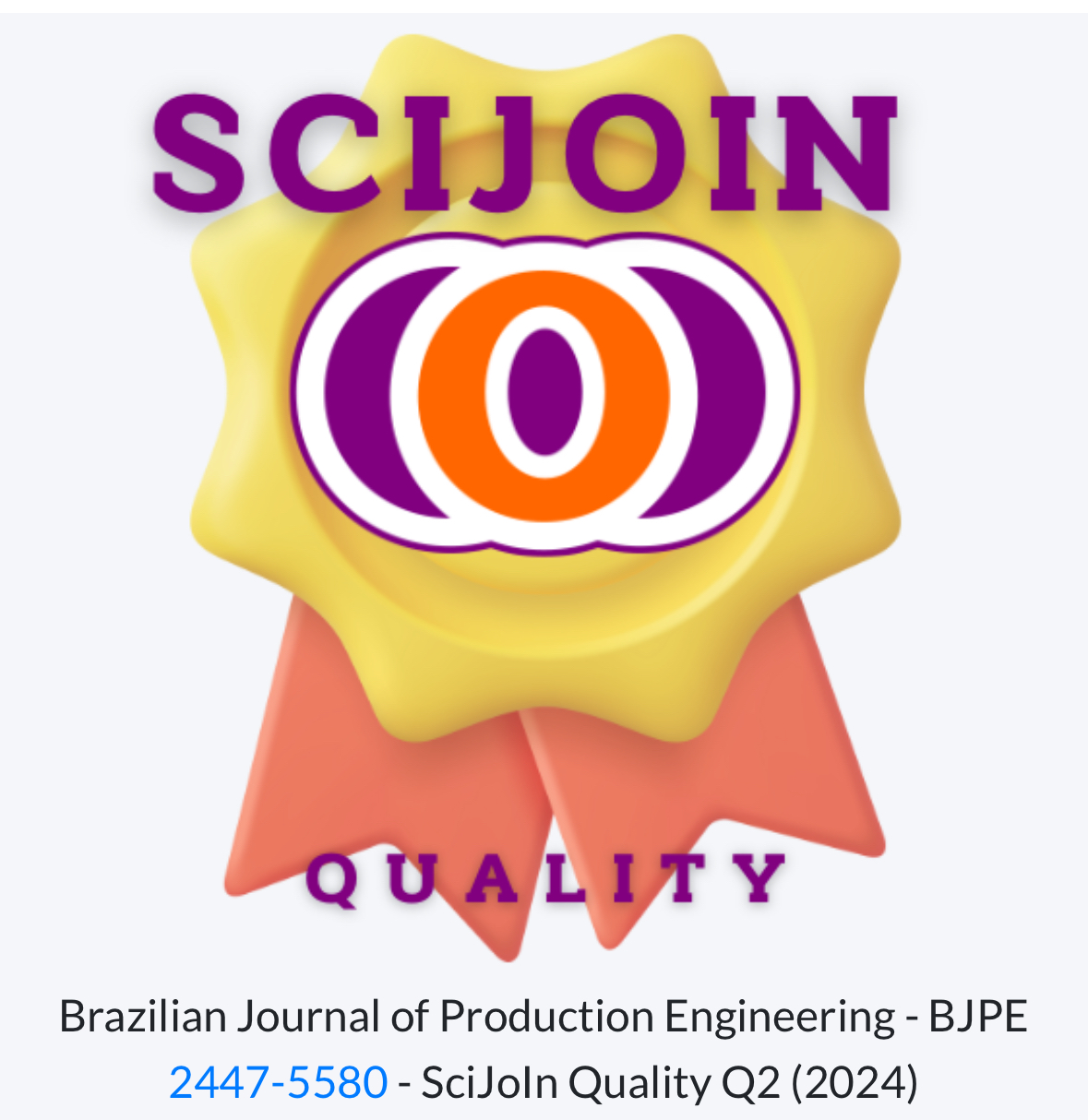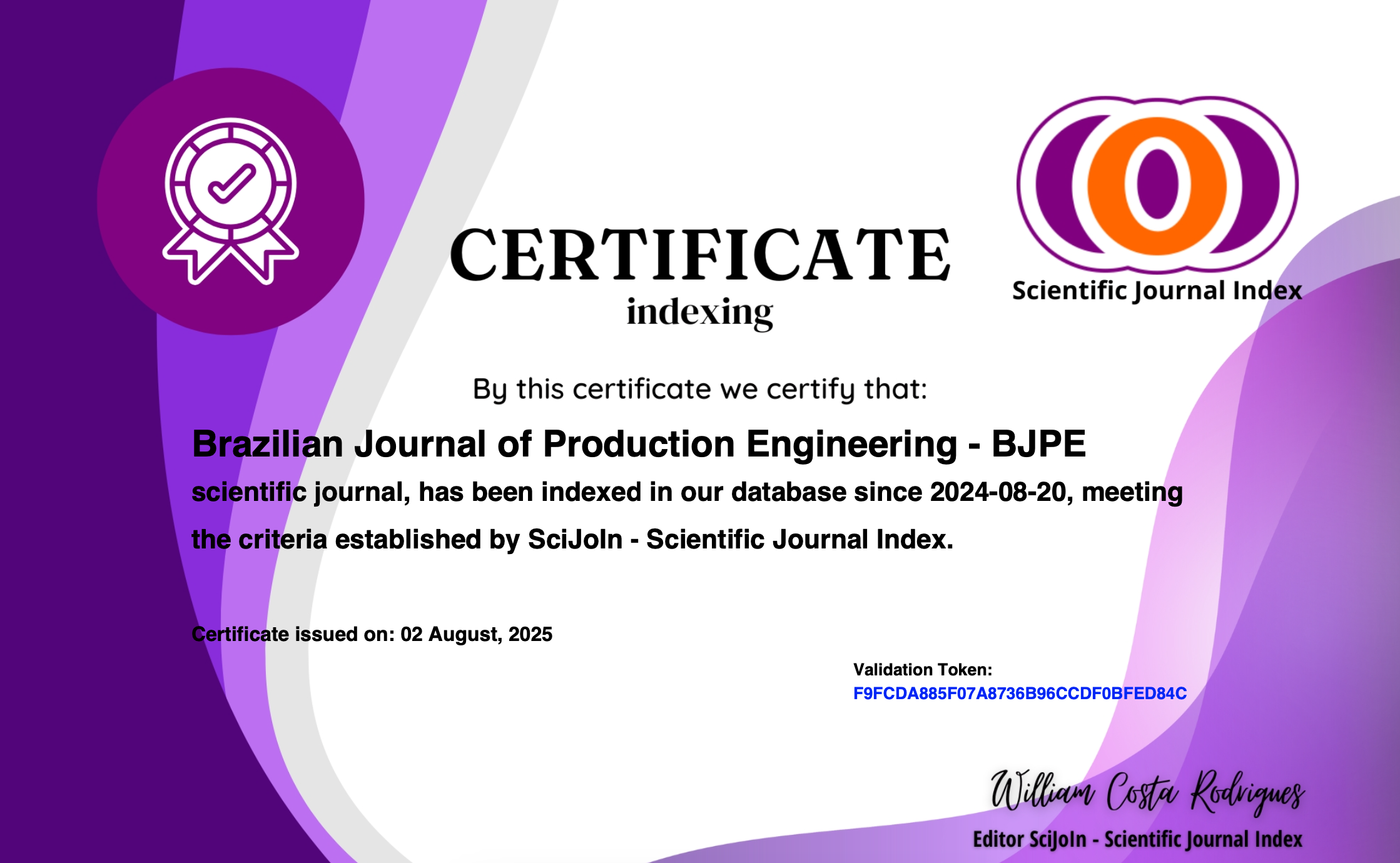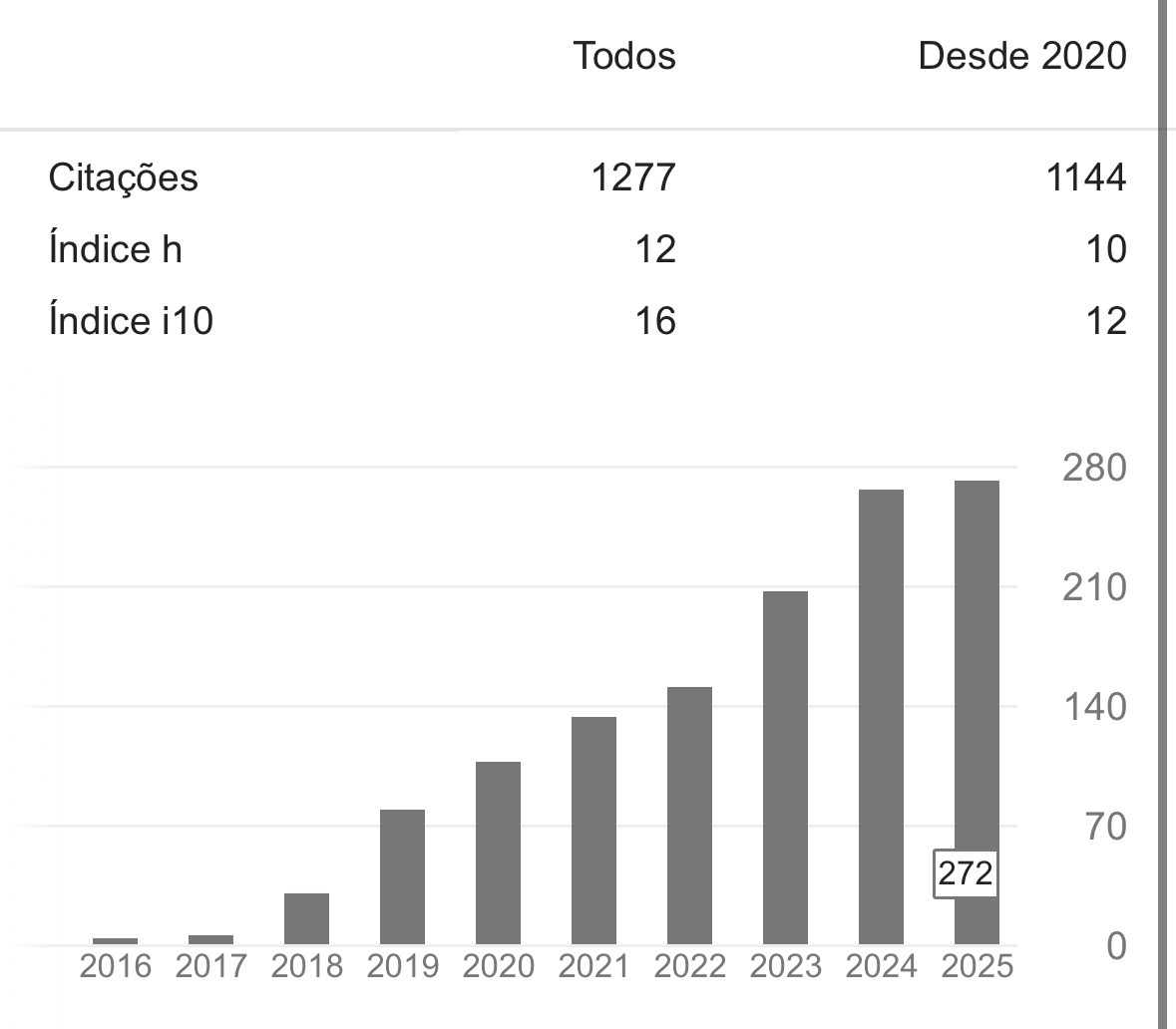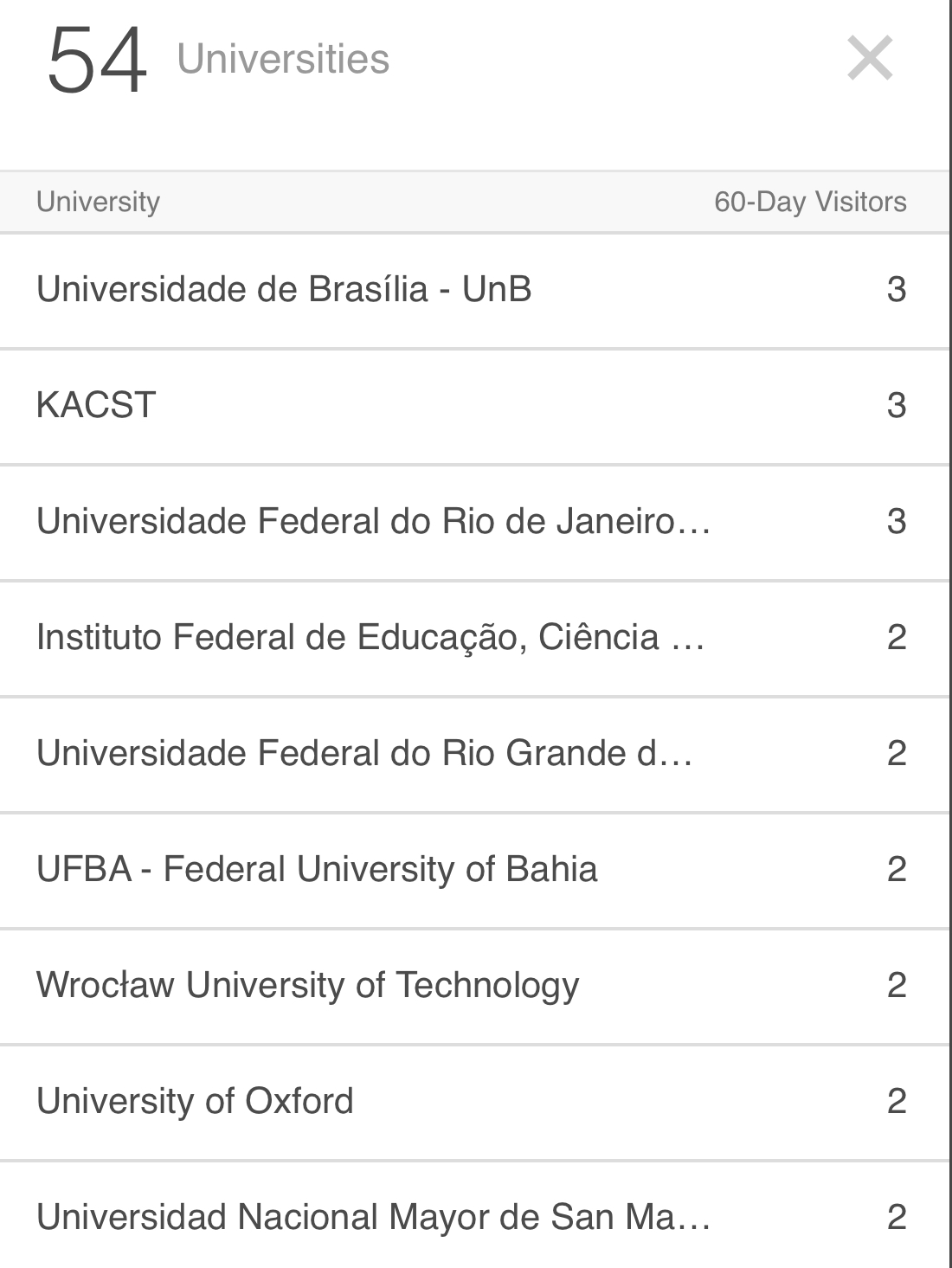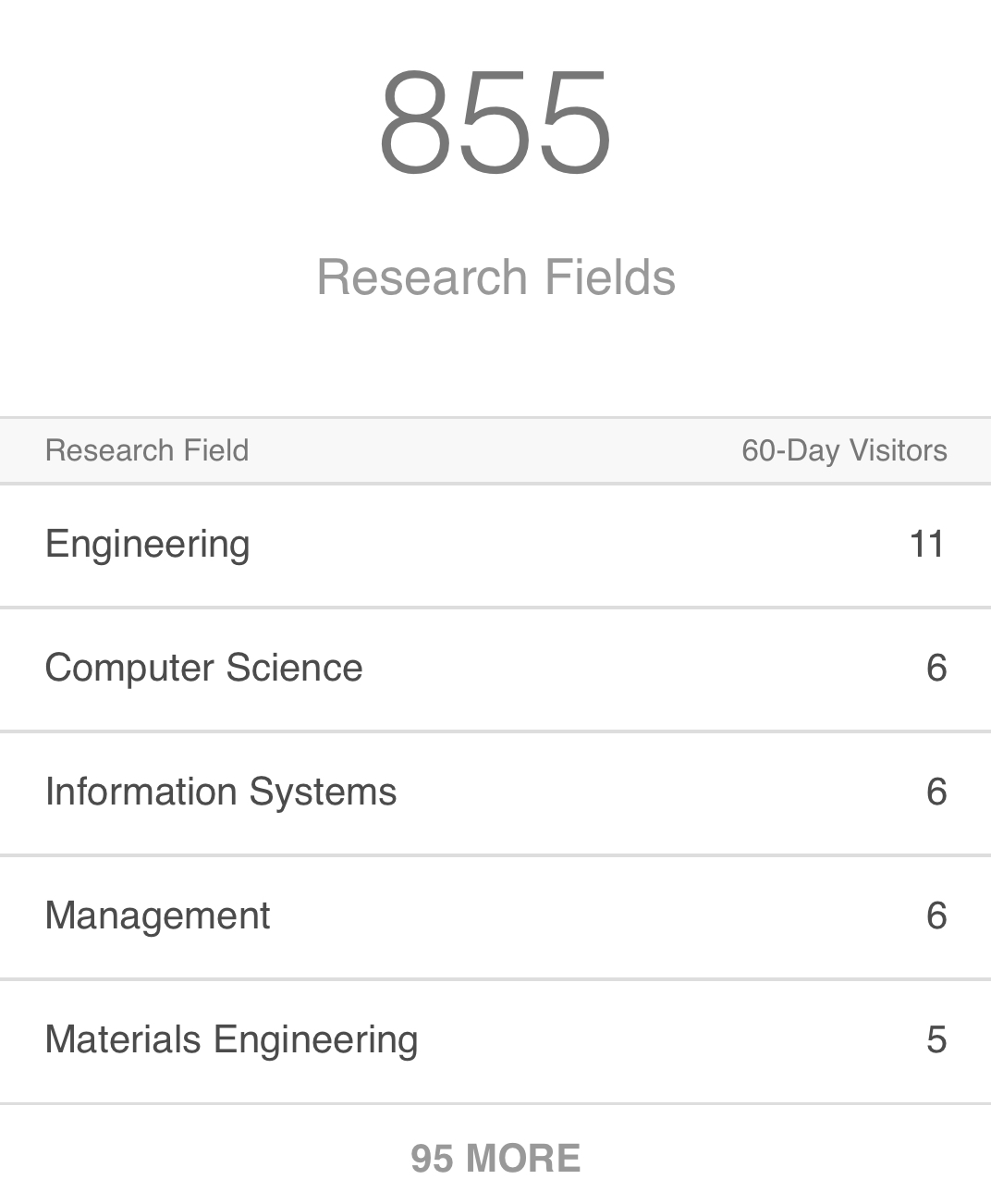ANÁLISE DE LITERATURA SOBRE O USO DE ULTRASSOM NO PROCESSO DE REMOÇÃO DE METAIS EM ÁGUA POR ADSORÇÃO
Resumo
Extensa revisão bibliográfica para localizar referências de aplicação de ultrassom em processamento de águas residuais apontaram instituições e pesquisadores ativos neste campo. A análise bibliométrica foi realizada na base de dados Web of Science®, a estratégia de busca consistiu na palavra chave “ultrasound” e posterior foco nas palavras-chaves “water”, “adsorption” e “iron”. A primeira publicação de pesquisa com uso de ultrassom foi no ano de 1949 nos Estados Unidos da América publicado pela revista Anatomical Record, pelo autor Wilcox, H. Entretanto, foi em 1964 que o número de publicações passou a ser mais significante com um crescimento de 22 vezes em relação a 1949. Em 2017 foi registrada maior participação nas publicações com um numero de 22.303 publicações, após o refinamento do montante total de publicações obteve-se 41 artigos principais dos quais os 10 mais citados foram utilizados para um estudo mais aprofundado. Ao final deste artigo se elaborou uma Matriz SWOT (Strenghts, Weaknesses, Opportunities, e Threats) e um georreferenciamento dos grupos de pesquisa onde foram publicados os artigos selecionados.Downloads
Referências
F. Ge, M.-M. Li, H. Ye, B.-X. Zhao, Effective removal of heavy metal ions Cd2+, Zn2+, Pb2+, Cu2+ from aqueous solution by polymer-modified magnetic nanoparticles, J. Hazard. Mater. 211 (2012) 366–372.
H. Liu, W. Liu, J. Zhang, C. Zhang, L. Ren, Y. Li., Removal of cephalexin from aqueous solutions by original and Cu(II)/Fe(III) impregnated activated carbons developed from lotus stalks Kinetics and equilibrium studies. Journal of Hazardous Materials 185 (2011) 1528–1535.
I. Ursachi, A. Stancu, A. Vasile., Magnetic a-Fe2O3/MCM-41 nanocomposites: Preparation, characterization, and catalytic activity for methylene blue degradation, Journal Journal of Colloid and Interface Science 377 (2012) 184–190.
J. Komkiene, E. Baltrenaite, Biochar as adsorbent for removal of heavy metal ions [Cadmium (II), Copper (II), Lead (II), Zinc (II)] from aqueous phase, Int. J. Environ. Sci. Technol. 13 (2016) 471–482.
L. Zhang, Q. Zhou, J. Liu, N. Chang, L. Wan, J. Chen., Phosphate adsorption on lanthanum hydroxide-doped activated carbon fiber, Chemical Engineering Journal 185– 186 (2012) 160– 167.
M. Cui, J. Choi, Y. Lee, J. Ma, D. Kim, J. Choi, M. Jang, J. Khim, Significant enhancement of bromate removal in drinking water: Implications for the mechanism of sonocatalytic reduction, Chemical Engineering Journal 317 (2017) 404–412.
M.H. Entezari, P. Kruus, Effect of frequency on sonochemical reactions. I: oxidation of iodide, Ultrason. Sonochem. 1 (1994) 75–79.
M. Mirzakhani, E. Parsaamal, A. Golzar., Strategy formulation with SWOT matrix: a case study of an Iranian Company, Global business and management research: An international journal. Vol. 6, Nº 2 (2014).
M.R. Awual, M.M. Hasan, Novel conjugate adsorbent for visual detection and removal of toxic lead (II) ions from water, Microporous Mesoporous Mater. 196 (2014) 261–269.
N. Chen, Z. Zhang, C. Feng, N. Sugiura, M. Li, R. Chen., Fluoride removal from water by granular ceramic adsorption, Journal of Colloid and Interface Science 348 (2010) 579–584.
N. Demir, G. Gündüz, M. Dükkancı, Degradation of a textile dye, Rhodamine 6G (Rh6G), by heterogeneous sonophotoFenton process in the presence of Fe-containing TiO2 catalysts, Environ Sci Pollut Res (2015) 22:3193–3201.
S. Chong, G. Zhang, Z. Wei, N. Zhang, T. Huang, Y. Liu., Sonocatalytic degradation of diclofenac with FeCeOx particles in water, Ultrasonics Sonochemistry 34 (2017) 418–425.
S. Kheirandish, M. Ghaedi, K. Dashtian, R. Jannesar, M. Montazerozohori, F. Pourebrahim, M. A. Zarc., Simultaneous removal of Cd(II), Ni(II), Pb(II) and Cu(II) ions via their complexation with HBANSA based on a combined ultrasound-assisted and cloud point adsorption method using CSG-BiPO4/FePO4 as novel adsorbent: FAAS detection and optimization process, Journal of Colloid and Interface Science 500 (2017) 241–252.
T.J. Mason, Large scale sonochemical processing: aspiration and actuality, Ultrason. Sonochem. 7 (2000) 145–149.
T.W. Cheng, M.L. Lee, M.S. Ko, T.H. Ueng, S.F. Yang, The heavy metal adsorption characteristics on metakaolin-based geopolymer, Appl. Clay Sci. 56 (2012) 90– 96.
W. Cui, P. Li, Z. Wangc, S. Zhenga, Y. Zhanga., Adsorption study of selenium ions from aqueous solutions using MgO nanosheets synthesized by ultrasonic method, Journal of Hazardous Materials 341 (2018) 268–276.
X. Wang, W. Liu, J. Tian, Z. Zhao, P. Hao, X. Kang, Y. Sang, H. Liu, Cr (vi), Pb (ii), Cd (ii) adsorption properties of nanostructured BiOBr microspheres and their application in a continuous filtering removal device for heavy metal ions, J. Mater. Chem. A 2 (2014) 2599–2608.
Y. Dai, F. Li, F. Ge, F. Zhu, L. Wu, X. Yang., Mechanism of the enhanced degradation of pentachlorophenol by ultrasound in the presence of elemental iron, Journal of Hazardous Materials B137 (2006) 1424–1429.
Downloads
Publicado
Edição
Seção
Licença
Copyright (c) 2019 Brazilian Journal of Production Engineering - BJPE

Este trabalho está licenciado sob uma licença Creative Commons Attribution-NonCommercial-ShareAlike 4.0 International License.

Todos os trabalhos publicados na Brazilian Journal of Production Engineering (BJPE) estão licenciados sob a Creative Commons Atribuição 4.0 Internacional (CC BY 4.0).
Isso significa que:
-
Qualquer pessoa pode copiar, distribuir, exibir, adaptar, remixar e até utilizar comercialmente os conteúdos publicados na revista;
-
Desde que sejam atribuídos os devidos créditos aos autores e à BJPE como fonte original;
-
Não é exigida permissão adicional para reutilização, desde que respeitados os termos da licença.
Esta política está em conformidade com os princípios do acesso aberto, promovendo a ampla disseminação do conhecimento científico.



2.png)
